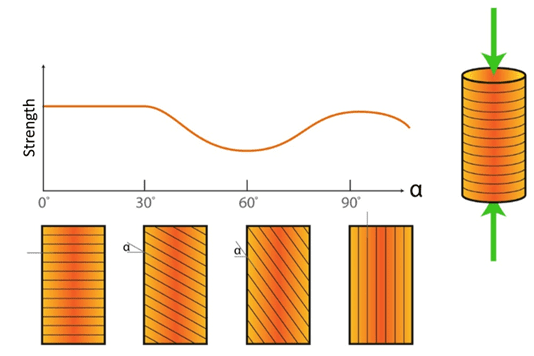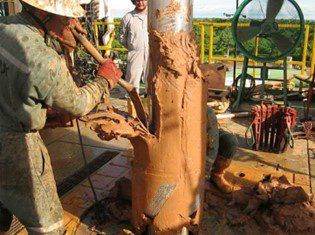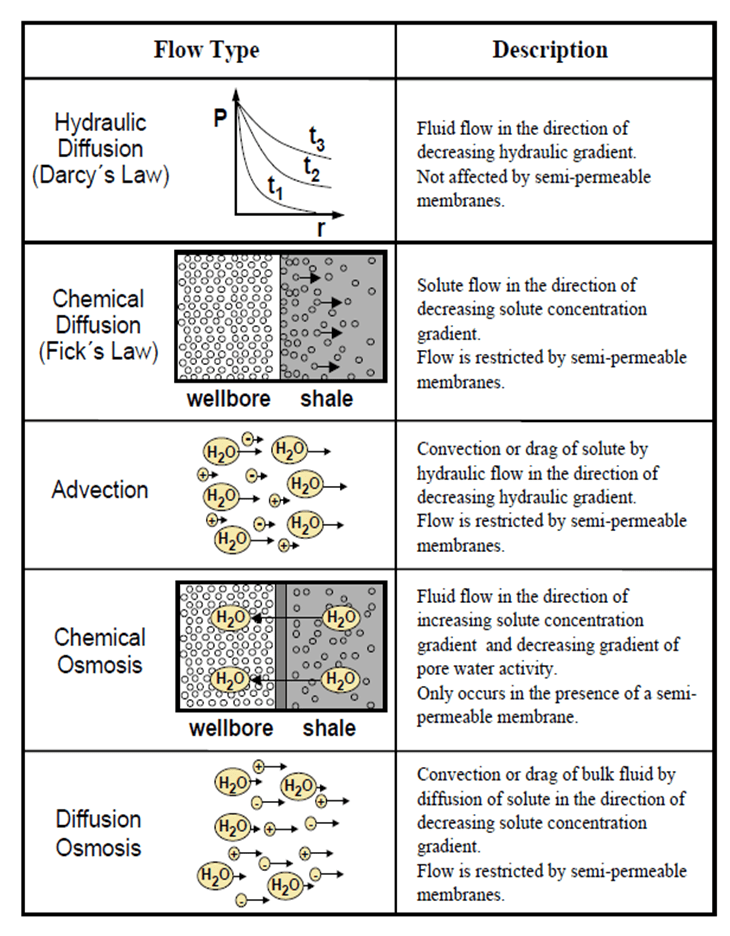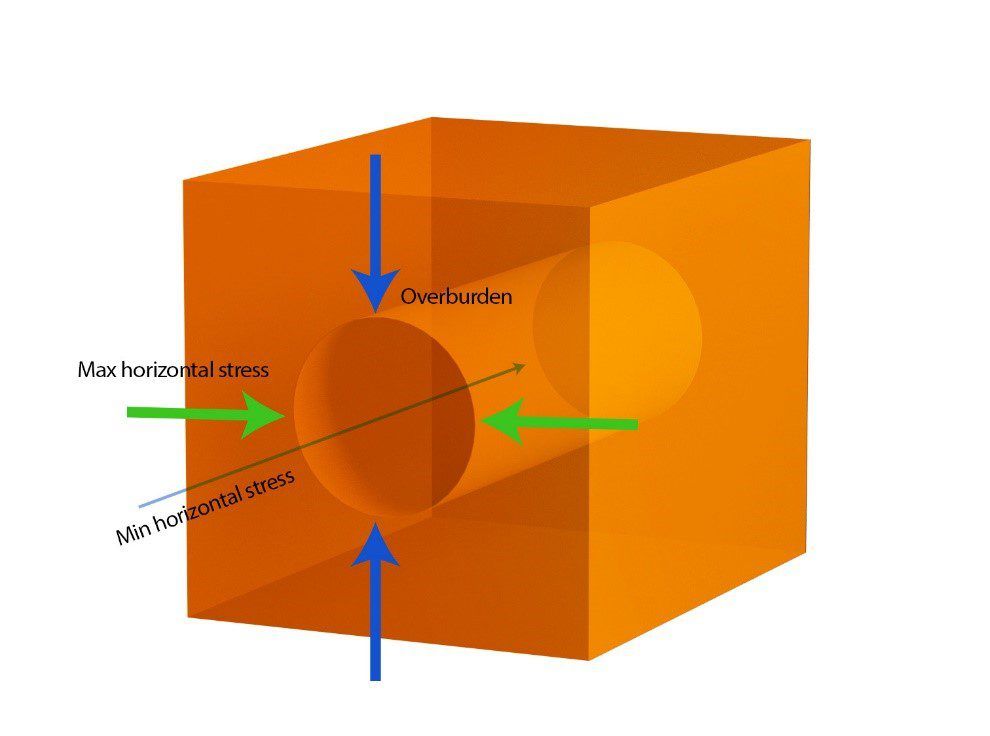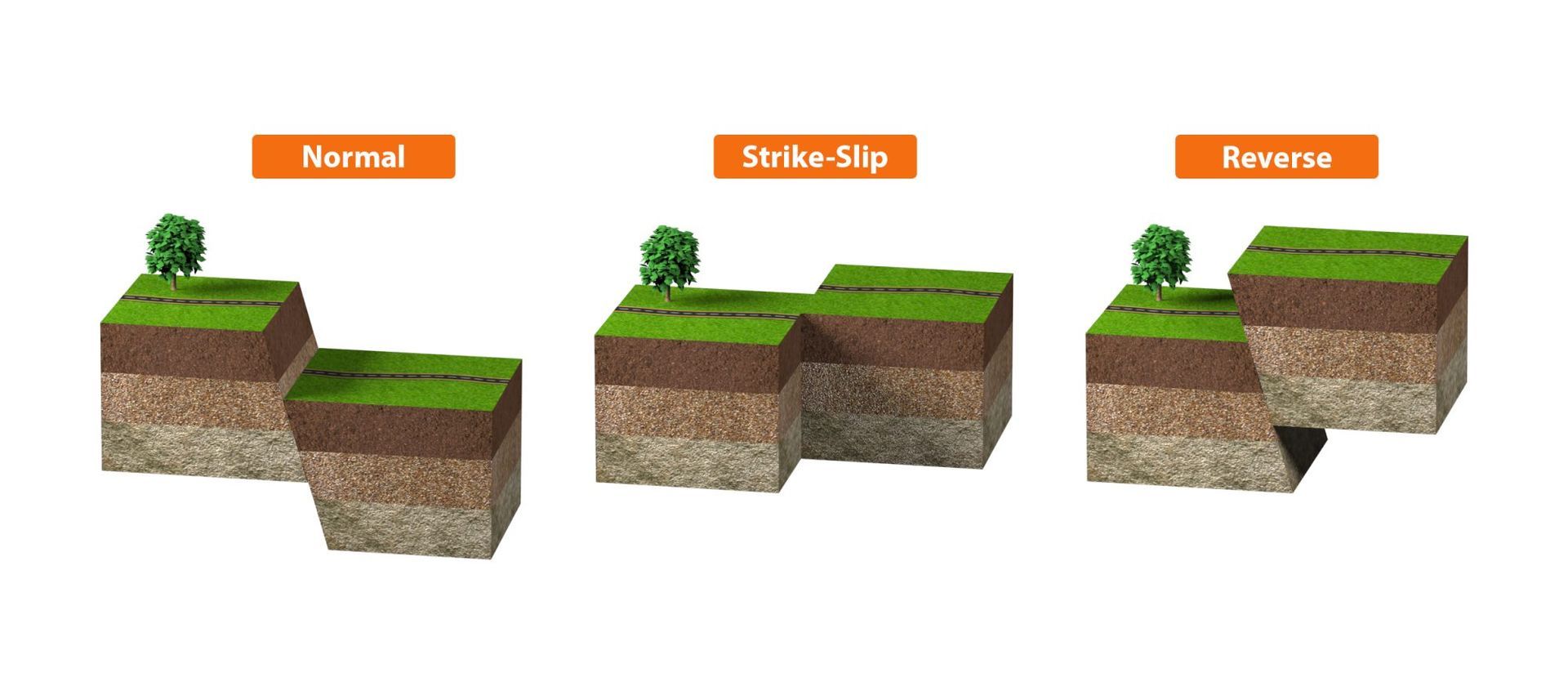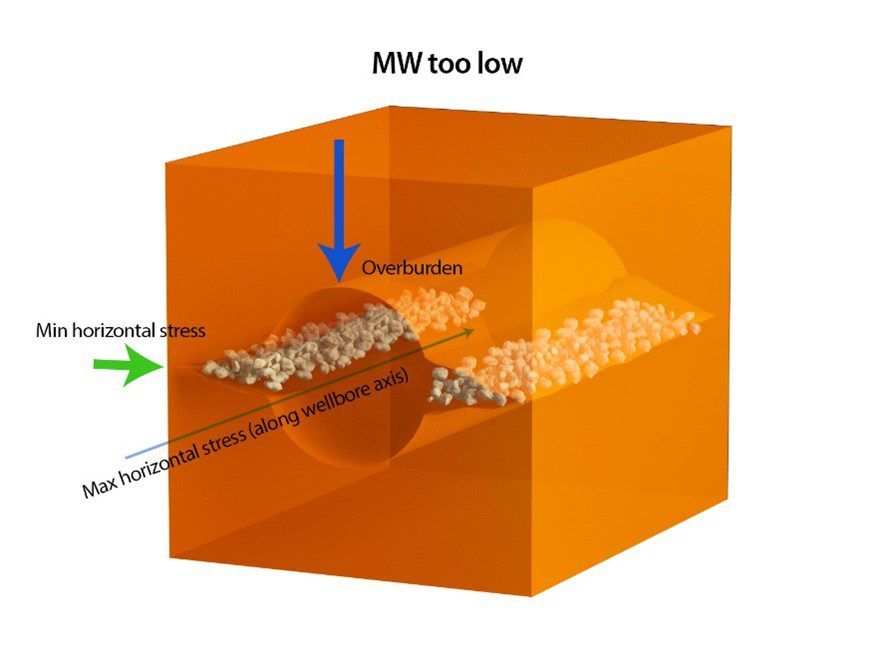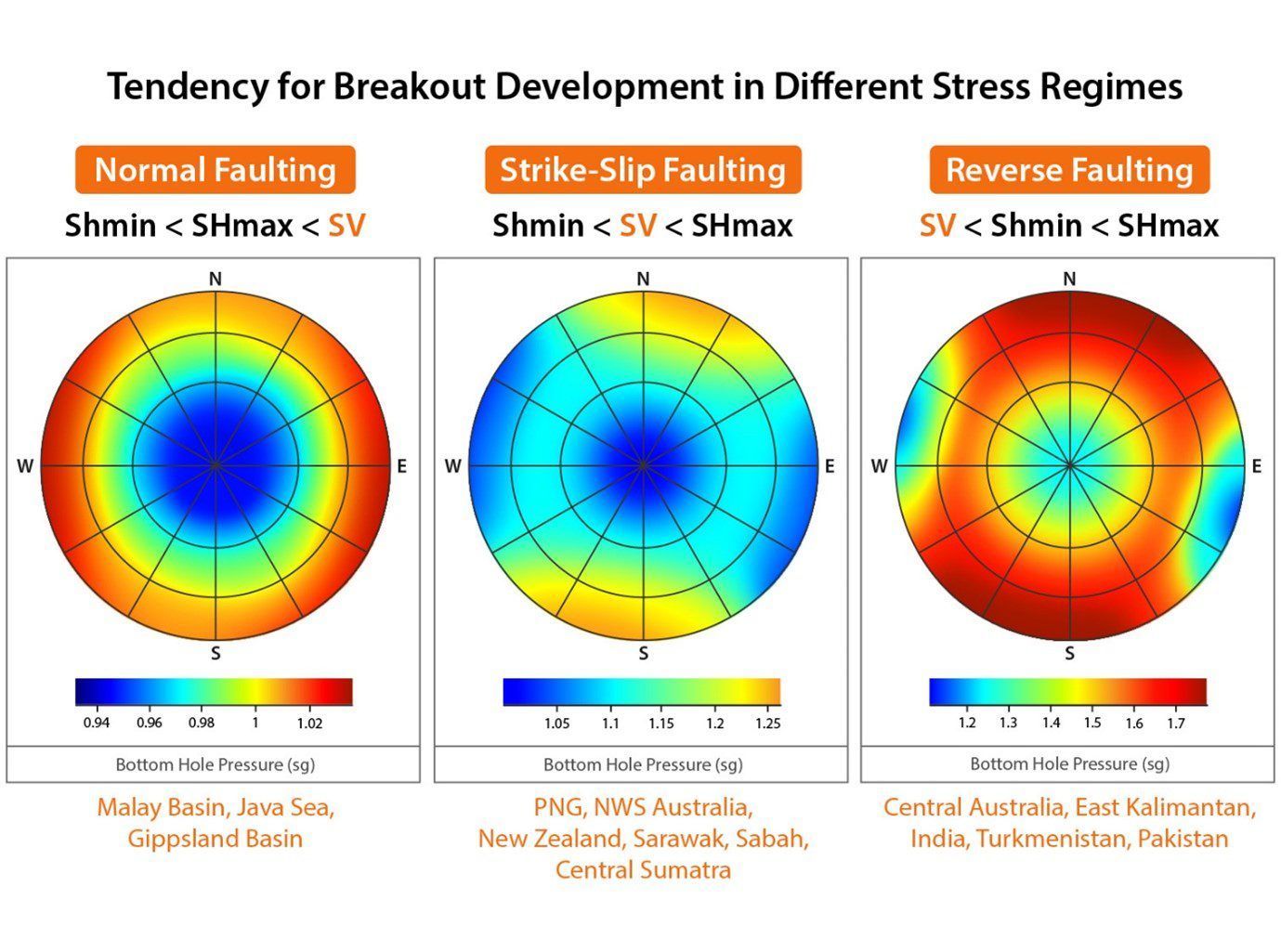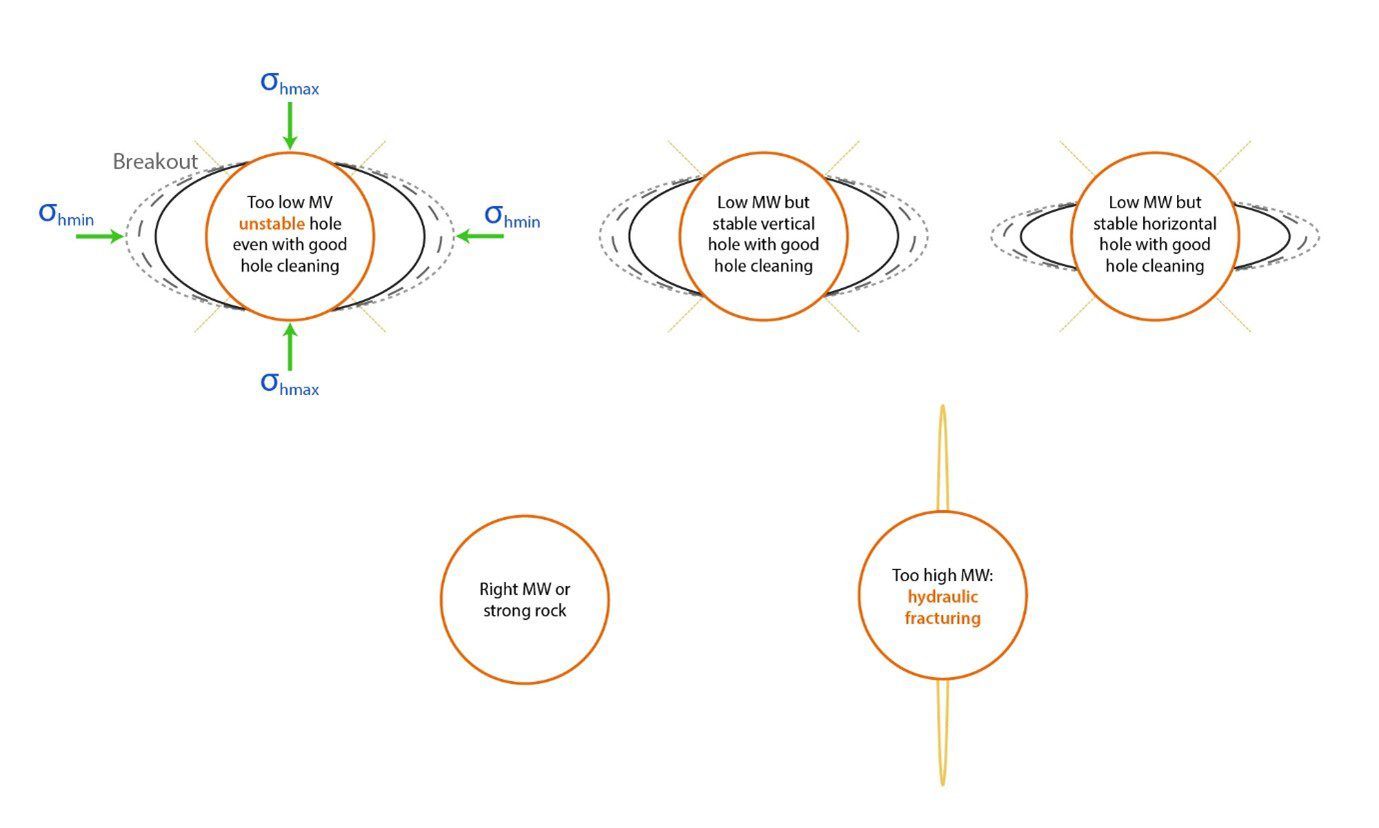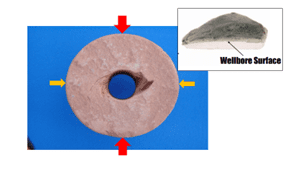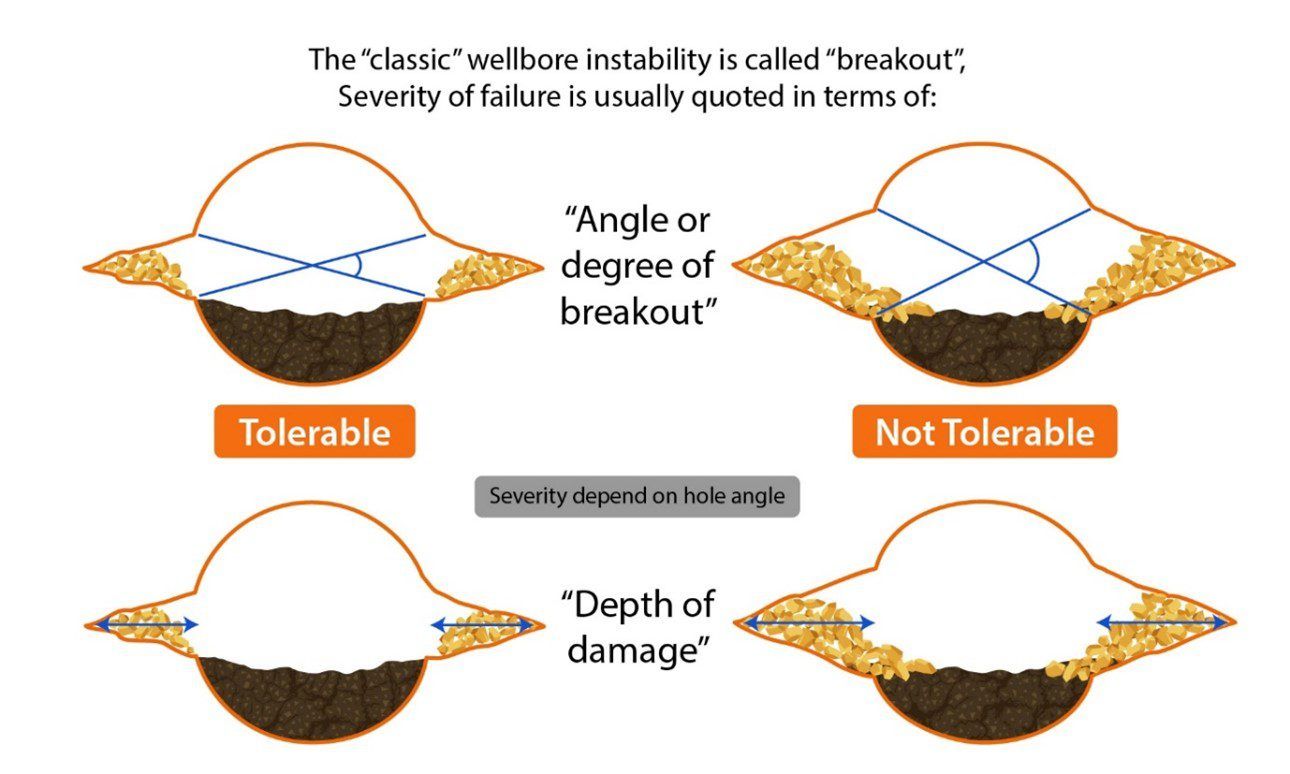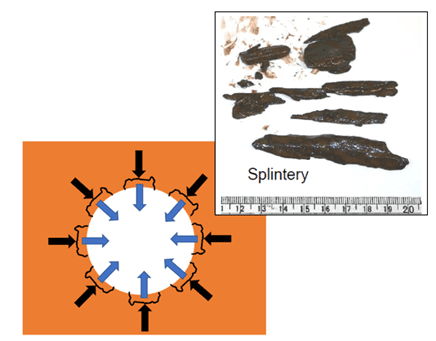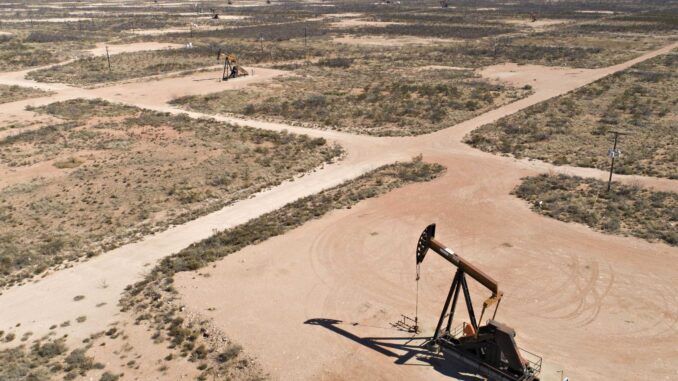The level of breakout can be defined in terms of the angle between opposing sides of the breakout and also by the depth. This introduces the concept of acceptable, or manageable breakout in terms of being able to clean the hole sufficiently and deal with the resulting hole rugosity on trips and when running casing.
As a general rule of thumb 90° of breakout could be manageable in a vertical well and up to 30° in a horizontal well, assuming a cautious, low risk approach to operational practices is taken.
Classical shear failure, where two surfaces of failure are created, occurs in brittle rocks, which includes almost all rock we drill (including shales), however some rocks fail in a ductile manner and others behave in a viscoelastic way, deforming over time, for example salt or anhydrite. At certain temperatures some resinous hydrocarbons (asphaltenes), like gilsonite will also flow or creep into the wellbore like salt. The higher the stress imbalance and the higher the temperature, the faster the creep.




